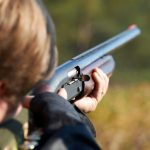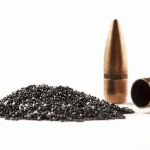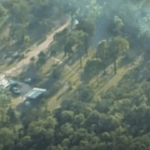Firearms in Australia: The Tension Between Ownership and Control

The massacre in Port Arthur in Tasmania on 28 April 1996 was the impetus for the Howard government to pass laws to restrict the ownership of firearms in Australia.
But the tension between the ability to own firearms and the control of firearms for community safety purposes remains – and is perhaps one of the most polarising issues in the nation to this day.
On the one hand, firearm licence holders – as well as those who seek firearm licences and permits – typically argue that individuals should have a legal right to own them, similar to the constitutionally protected right brought about by the second amendment to the United States constitution. They often argue that legal firearm ownership does not present a significant danger to the community, that illegal ownership is the real issue, and that ‘guns don’t kill people, people do’.
To support the argument, they point to nations such Finland and Iceland which have high rates of firearms ownership but low rates of firearm fatalities.
On the other, those in favour of strict firearms controls argue that having high numbers of easily-accessible firearms in the community presents an unacceptable risk to community safety.
They point to the high rate of firearm fatalities in the United States – which has a firearm ownership rate of 120.5 per 100 persons – nearly double the rate for the nation with the next highest rate (Falkland Island) and quadruple the mentioned Nordic nations. The gun homicide rate in that nation is relatively high, at 4.42 per 100,000 persons, and firearm fatality – whether by homicide or misadventure – is one of the leading causes of death for children under the age of five.
They argue that, culturally, Australia is more similar to the United States than Nordic nations and having high firearm ownership rates will lead to greater crime.
Whichever ‘side’ a person is on – or whether they are on any side at all – the National Firearms Agreement and firearms amnesty did coincide with a gradual reduction in firearms related deaths in Australia over the subsequent two and a half decades. That said, the question of whether there is a causal link is highly debatable.
In any event, here is a summary of agreement and related firearms control initiatives agreed between the Federal, state and territory governments primarily in response to the Port Arthur Massacre.
The National Firearms Agreement
The 1996 National Firearms Agreement (NFA) is a set of rules and regulations, agreed by all state and territory governments which, among other things, introduced strict licensing requirements, implemented waiting periods and secure storage rules, prohibited the possession of certain firearms and initiated a mandatory buyback program that saw over 600,000 firearms removed from circulation.
General consensus
The reforms were underpinned by political consensus and public support at the time, reshaping Australia’s relationship with guns.
They redefined gun ownership as a privilege, rather than a right, which was a significant shift in perspective at the time.
- The National Firearms Agreement (NFA) – The Core Legal Framework
- Establishment and Principles – The National Firearms Agreement (NFA) introduced sweeping firearms restrictions, including bans on semi-automatic firearms, mandatory licensing, a 28-day waiting period, secure storage requirements, and a nationwide buyback program.
- Licensing and Category Structure – Australian law categorises firearms (A, B, C, R/E) based on type and use. Ownership requires demonstrating a “genuine reason”—such as sport shooting, pest control, or farming—explicitly excluding self-defence. Licences must be renewed periodically (usually every 3–5 years).
- Limitations and State Compliance Issues – While the NFA established a national paradigm, enforcement and legislative alignment have varied across states. A 2017 audit by the University of Sydney found that no jurisdiction fully complied with NFA standards. NSW, in particular, allows practices at odds with NFA intent—such as extending use of silencers, allowing semi-automatic firearms across broader occupation categories, and accepting hunting club membership as a “genuine reason.”
- The National Firearms Register (NFR) – A Long-Awaited Infrastructure
- Framework and Timeline – A national firearms registry has been a long-standing objective of the NFA. In December 2023, federal, state, and territory governments finally agreed to implement the National Firearms Register (NFR), with a projected operational date of mid-2028.
- The NFR—led by the Australian Criminal Intelligence Commission (ACIC) and supported by federal funding of around $160–161 million—will integrate state and territory data, provide near-real-time firearm tracking, licence verification, and risk alerts.
- Drivers of Implementation and Obstacles – High-profile incidents, including the 2022 Wieambilla shooting and a 2025 ambush in Porepunkah, highlighted the dangerous gaps in interstate information sharing and drove calls to fast-track the registry.
- Still, bureaucratic hurdles and inconsistencies in state data systems—many of which are still paper-based or outdated—have hindered progress.
- NSW-Specific Laws: Emerging Legal Fault Lines
- The “Right to Hunt” Proposal – A controversial NSW hunting bill, introduced by the Shooters, Fishers and Farmers Party, seeks to enshrine a “right to hunt,” establish a powerful hunting authority, and ease controls on tools like silencers and thermal scopes. This has prompted criticism from survivors of Port Arthur and gun-control advocates, who say it undermines the NFA’s core principles.
- “Permission-to-Shoot” Loophole – NSW licences can be obtained using minimally verified “permission-to-shoot” letters for recreational hunting—a loophole tragically spotlighted by a 2023 murder-suicide. The letters can be used indefinitely and aren’t routinely revalidated. In response, police are calling for stricter renewal requirements, including updated documentation, following precedents set in Western Australia.
- 3D-Printed Firearms – NSW criminalises the possession of digital blueprints for 3D-printed firearms under Section 51F of the Firearms Act 1996, aiming to curb untraceable and homemade weaponry.
- Secure Storage Standards – All states mandate that firearms be stored in steel safes (or robust wooden equivalents) bolted to the floor or wall. Some include separate locking compartments for ammunition. In WA and Victoria, specific enhanced locking measures apply based on safe dimensions. Police conduct inspections and random storage checks to enforce compliance with regulations.
Public safety
Firearm related death rates plummeted in the years following the implementation of the reforms.
Firearm related deaths declined from about 2.9 per 100,000 in 1996 to under 1 per 100,000 by 2018.
Studies suggest the reforms contributed to a significant reduction in firearm homicides, suicides, and mass shootings.
Moving forward
That said, many believe more should be done to reduce the incidence of firearm related deaths and crime generally.
A national firearms register, envisioned since 1996, remains unfinished. State-level laws vary, weakening national cohesion in gun regulation.
And although rate of firearms licensed holders has declined over the decades, the total number of legal firearms has nearly doubled to over 4 million, with around 2,000 new guns added weekly.
Many question why it is necessary for some individuals to own more than 100 firearms; seeing this as a risk to community safety, given they may be stolen and used for nefarious purposes.
However, pro-firearm lobby groups—such as the Shooters Union and SIFA—have rallied together in a powerful political alliance, opposing reforms such as a national registry on the basis that it is unnecessary and unjustifiably costly.
And in New South Wales, a proposed bill to guarantee a “right to hunt” on public lands has, while being welcomed by pro firearm groups, has triggered opposition from families of Port Arthur victims and gun‐control advocates.
Licensing loophole
Currently in New South Wales, licences can be granted via minimally verified “permission-to-shoot” letters issued indefinitely for recreational hunting.
A 2023 murder-suicide whereby the killer obtained a licence in the way highlighted the dangers of the ‘loophole’.
The incident led to a number of licences obtained in this way being revoked, and are proposing to conduct more thorough checks when existing licences are sought to be renewed.
High profile killings
High-profile tragedies continue to punctuate the debate.
The recent shooting deaths of police officers in Wieambilla in Queensland and Porepunkah in Victoria have raised questions regarding whether so-called ‘sovereign citizens’ and other extremists and ‘fixated persons’ should be permitted to hold firearms licences; specifically, whether the rules for owning firearms should be more strict and background / suitability checks more thorough.
Rights, safety and the way forward
The essence of the debate remains clear: public safety must be the unwavering foundation of gun policy, but legitimate firearm use—such as sport shooting, pest control, and hunting—must also be accommodated responsibly.
Keys to Rebalancing
| Area | Public Safety Measures | Safeguarding Responsible Ownership |
| National Registry | Accelerate rollout and mandate usage. | Ensure privacy safeguards and fair entry standards. |
| Licensing Controls | Close loopholes like indefinite ‘permission-to-shoot’ letters. | Introduce standardised revalidation and genuine reasons. |
| Ownership Limits | Set reasonable caps per person to reduce stockpiling. | Tailor regulations for hobbyists vs. high-capacity users. |
| Buybacks & Amnesties | Expand periodic surrender programs for outdated or illegal firearms. | Fair compensation and outreach to ensure voluntary participation. |
| Public Dialogue | Maintaining political consensus, honouring Port Arthur’s legacy. | Engage rural communities and firearm users in the co-design of safety standards. |
Drawing on history
Australia’s 1996 reforms demonstrate boldness, unity, and a clear purpose. Those virtues must be re-emphasised—especially amid fractured regulation and rising volumes of guns in circulation.
Reinforcing federal-state coordination, speeding registry deployment, and tightening licensing will help restore balance. At the same time, offering clear and reasonable pathways for lawful gun ownership—rooted in training, storage, and legitimate need—can help sustain trust and respect among sporting, occupational, and rural users.
Australia’s journey—from the rapid, transformative 1996 reforms to the gradual loss of control—is a stark reminder: gun safety is not a set-and-forget achievement. The landscape has shifted. Growing firearm numbers, lobbying pressure, fragmented licensing, and delayed infrastructure threaten Australia’s reputation as a global model.
But by recommitting to a framework that privileges public safety—underpinned by clear, enforceable rules and fair access for legitimate uses—Australia can navigate the tension between constitutional principles and community security. The path forward lies in honouring past resolve and shaping a robust, modern, balanced firearms regime.






